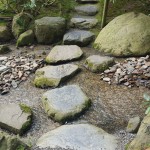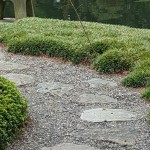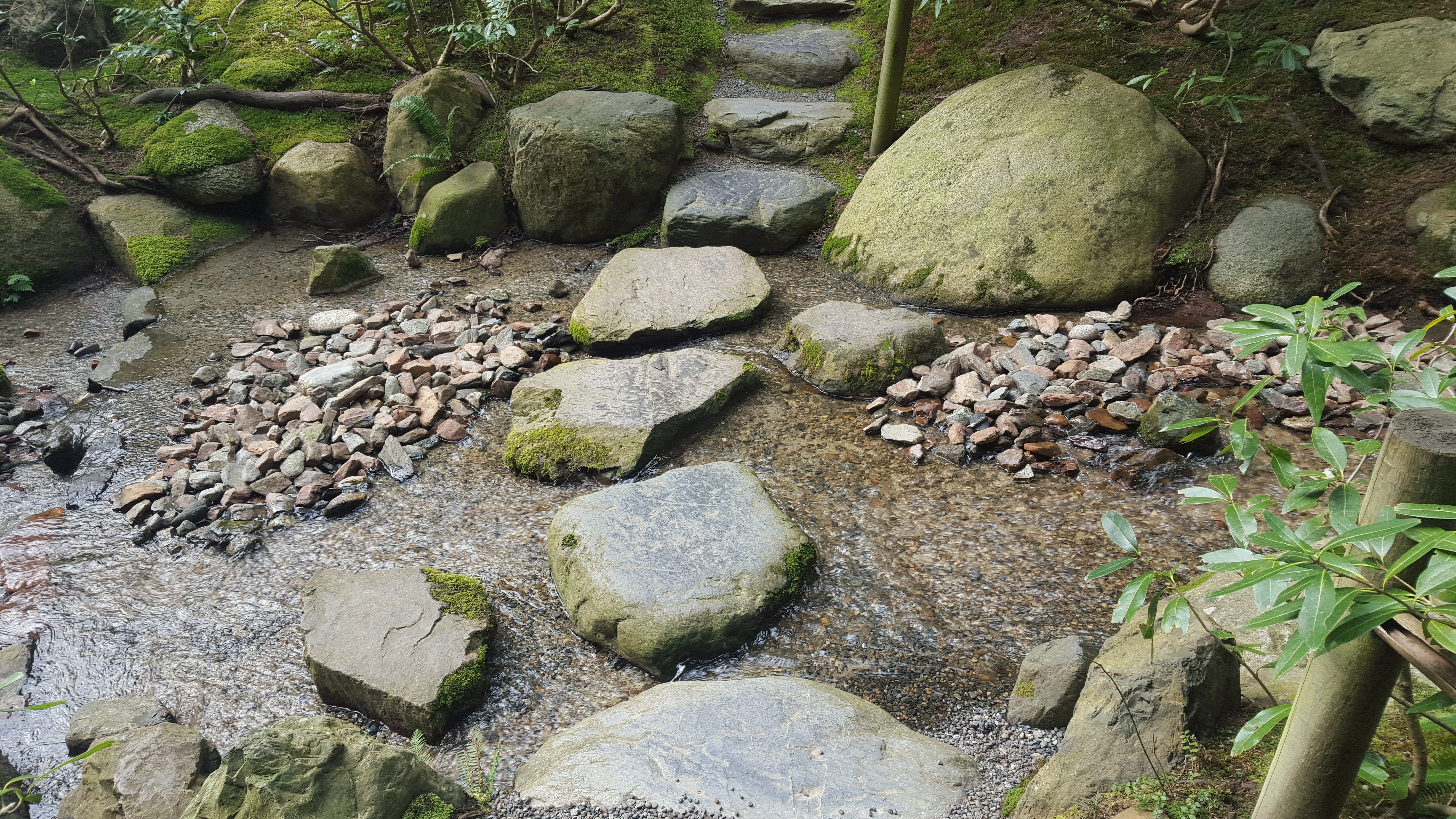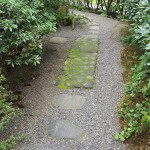Famous author and Buddhist monk, Yoshida Kenko explains the notion of irregularity in his work, Essays in Idleness: “In everything, no matter that it may be, uniformity is undesirable. Leaving something incomplete makes it interesting, and gives one the feeling that there is room for growth.” The aesthetic principle of asymmetry and irregularity – fukinsei is one Japanese garden design techniques found in the Nitobe Garden.
Nature is full of surprises; nothing is perfect. Deliberately placing objects out of order actually conveys the symmetry of the natural world, and it brings about the idea of maintaining balance and harmony. By placing objects irregularly in a regular setting, it creates unexpected scenery, which attracts people/visitors and it breaks the pattern of perfection.
Although stones are supposed to be laid out in accordance with strict rules, we see, in the following photos, there are these “oddballs” that do not really fit, nor do they follow the preexisting pattern.
Notice the two stepping stones that are placed on the sides.

Two slightly larger rocks deliberately placed in the middle of the stream.

And here, the one stepping stone (top) that is put on the side of pathway.

Also here, the stepping stones pathway broken up and separated with a completely different style and rock/stone arrangement.
References:
Keene, Donald. 1969. Japanese Aesthetics. Philosophy East and West 19 (3): 293-306.
Sugiyama, Ryo. “Nitobe Garden.” Lecture, University of British Columbia, Vancouver, BC, February 24, 2016.


